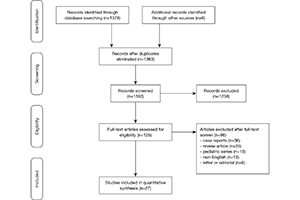Implantable cardioverter defibrillator therapy in hypertrophic cardiomyopathy: an updated systematic review and meta-analysis of outcomes and complications
Abstract
Background: Since the introduction of the implantable cardioverter-defibrillator (ICD) in patients with hypertrophic cardiomyopathy (HCM), the incidence of sudden cardiac death (SCD) has been significantly reduced. Given its widespread use, it is important to identify the outcomes associated with ICD use in patients with HCM. The present paper is a systematic review and meta-analysis of the rates of appropriate and inappropriate interventions, mortality, and device complications in HCM patients with an ICD.
Methods: We conducted a systematic review and meta-analysis on 27 studies reporting outcomes and complications after ICD implantation in patients with HCM. ICD interventions, device complications, and mortality were extracted for analysis.
Results: A total of 3,797 patients with HCM and ICD implantation were included (mean age, 44.5 years; 63% male), of which 83% of patients had an ICD for primary prevention of SCD. The cardiac mortality was 0.9% (95% CI: 0.7–1.3) per year and non-cardiac mortality was 0.8% (95% CI: 0.6–1.2) per year. Annualized appropriate intervention rate was 4.8% and annualized inappropriate intervention was 4.9%. The annual incidence of lead malfunction, lead displacement and infection was 1.4%, 1.3%, and 1.1%, respectively.
Conclusions: ICD use in patients with HCM produces low rates of cardiac and non-cardiac mortality, and an appropriate intervention rate of 4.8% per year. However, moderate rates of inappropriate intervention and device complications warrant careful patient selection in order to optimize the risk to benefit ratio in this select group of patients.
Cover






